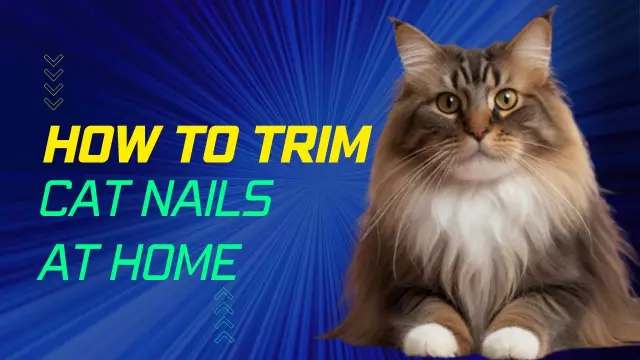- Author Delia Mathews [email protected].
- Public 2023-12-16 00:05.
- Last modified 2025-01-22 15:45.
Domestic cats usually lead a sedentary lifestyle and they do not have the opportunity to constantly grind down growing claws. Therefore, the owners need in such cases to periodically cut the claws of the pet.

Instructions
Step 1
Start training your kitten to trim its nails from an early age. This is not the most pleasant procedure for an animal. But over time, the kitten will get used to it, and clipping the claws will not be a burden either to you or to him. The first times it is better to carry out this procedure together, so that it is easier to keep the cat.
Step 2
Purchase special clippers from the pet store for trimming animal claws. Choose as sharp an instrument as possible. In this case, the claw cut will be clean. You can also use a special nail file to smooth out the clipped claw.
Step 3
Secure the cat to the table with the help of a helper or on your lap. Take the nail clipper in your right hand. The claws of cats are hidden under the pillows. Therefore, gently press down on the cat's foot until the claws appear. Hold the pad between your index finger and thumb.
Step 4
Pay attention to your kitten's claws. Basically, cats have light-colored claws, almost transparent. Through them, nerve endings and blood vessels are visible. It is they who give the base of the claw a pink color. This part of the claw is the pulp, the most sensitive area of the nail. When trimming the claws, be careful not to touch or cut the pulp.
Step 5
Position the tongs perpendicular to the kitten's claw. Cut from top to bottom. If you cut parallel to the growth of the claw or obliquely, the claw may begin to exfoliate. Cut the claw off the kitten at a distance of about 2 mm from the pulp.
Step 6
Note that the cat has a dewclaw on the inside of the paw. It also needs to be trimmed. This claw practically does not wear off and in severe cases can grow into the pad of the foot.
Step 7
Treat the claw with a styptic pencil, apply gauze to the cut, or press the claw into a bar of soap if bleeding occurs. The blood should stop in 5 minutes. If bleeding persists, bandage the wound and show the animal to your veterinarian to avoid inflammation.






